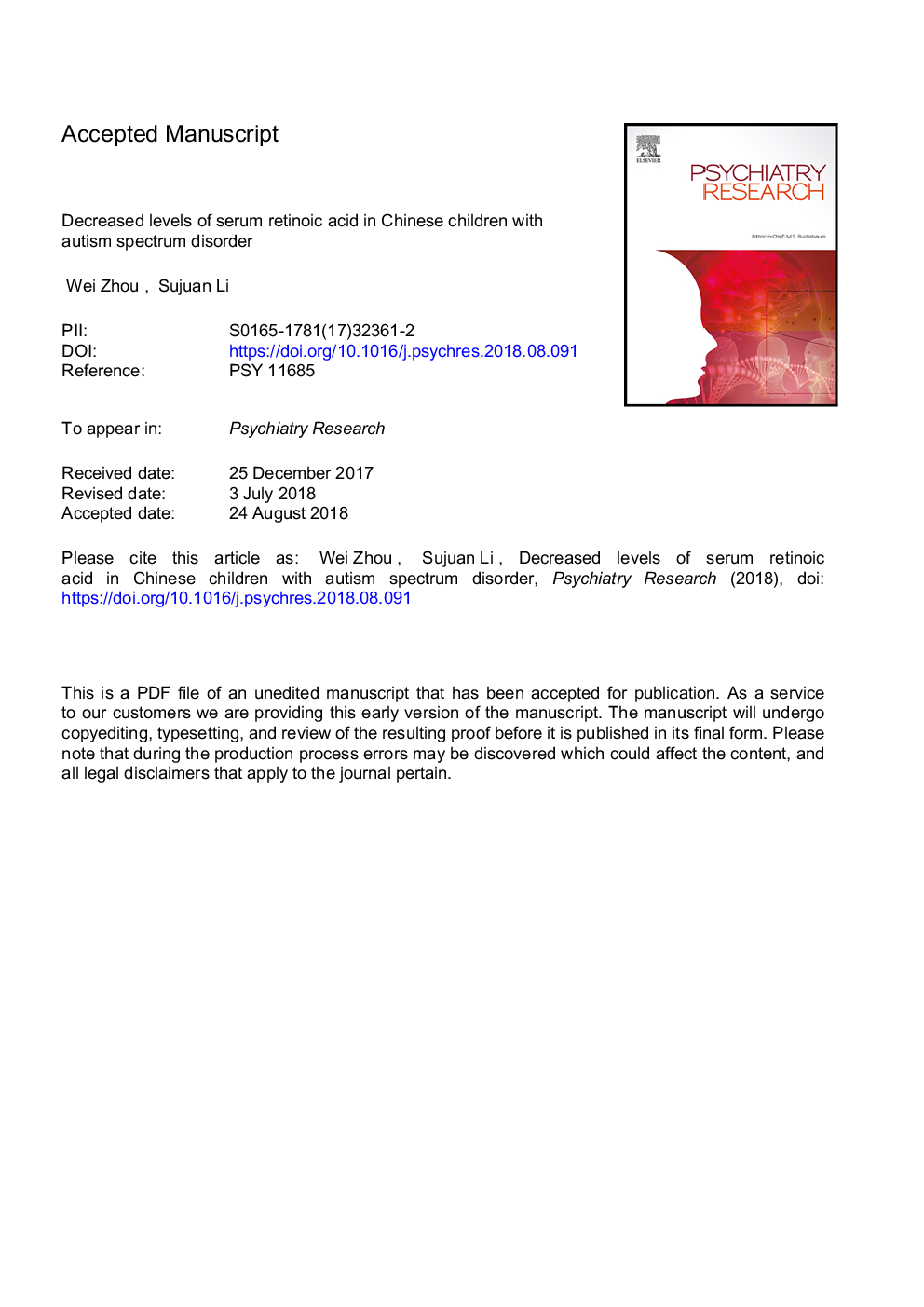| Article ID | Journal | Published Year | Pages | File Type |
|---|---|---|---|---|
| 10132388 | Psychiatry Research | 2018 | 20 Pages |
Abstract
Previous studies framed a possible link of retinoic acid (RA) regulation in brain to autism spectrum disorders (ASD) etiology. The aim of this study was to measure serum levels of RA in relation to the degree of the severity of autism. Serum RA levels were measured by enzyme-linked immunosorbent assay (ELISA) colorimetric detection Kit in 81 children with autism and 81 age-sex matched typical development children. The severity of autistic symptomatology was measured by the Childhood Autism Rating Scale (CARS) score using the Chinese version. The serum levels of RA in the children with ASD (1.68â¯Â±â¯0.52â¯ng/ml) were significantly lower than those of control subjects (2.13â¯Â±â¯0.71â¯ng/ml) (Pâ¯<â¯0.001). At admission, 57 children (70.4%) had a severe autism. In those children, the mean serum RA levels were lower than in those children with mild to moderate autism (1.57â¯Â±â¯0.47â¯ng/ml VS. 1.95â¯Â±â¯0.55â¯ng/ml; Pâ¯=â¯0.003). Furthermore, in multivariate model, low RA level was associated with having/the presence of ASD (adjusted odd ratio[OR] 0.516; Pâ¯=â¯0.003) and severe ASD (OR 0.415; Pâ¯=â¯0.015) after adjusted for confounding factors. The data suggested that serum RA levels were reduced in the group with ASD, and the levels negative correlated significantly with the severity of autism.
Keywords
NPVRetinoid X receptorHcyRARIL-6RXRhs-CRPLC/MS-MSPPVROC5-HT, 5-hydroxytryptamineAUCautism spectrum disordersAutism spectrum disorderpositive predictive valuenegative predictive valuestandard deviationinterleukin 6ELISAEnzyme-linked immunosorbent assayRiskCNSRORARaldh1Retinoic acidembryonic stemCerebral Spinal Fluidcentral nervous systembody mass indexBMISeveritycoefficients of variationconfidence intervalsCARSCSFChildhood Autism Rating Scalearea under the curveodds ratiosASDhomocysteinehigh-sensitivity C-reactive proteinChineseLiquid chromatography/tandem mass spectrometryRetinoic acid receptorreceiver operating characteristic
Related Topics
Life Sciences
Neuroscience
Biological Psychiatry
Authors
Wei Zhou, Sujuan Li,
